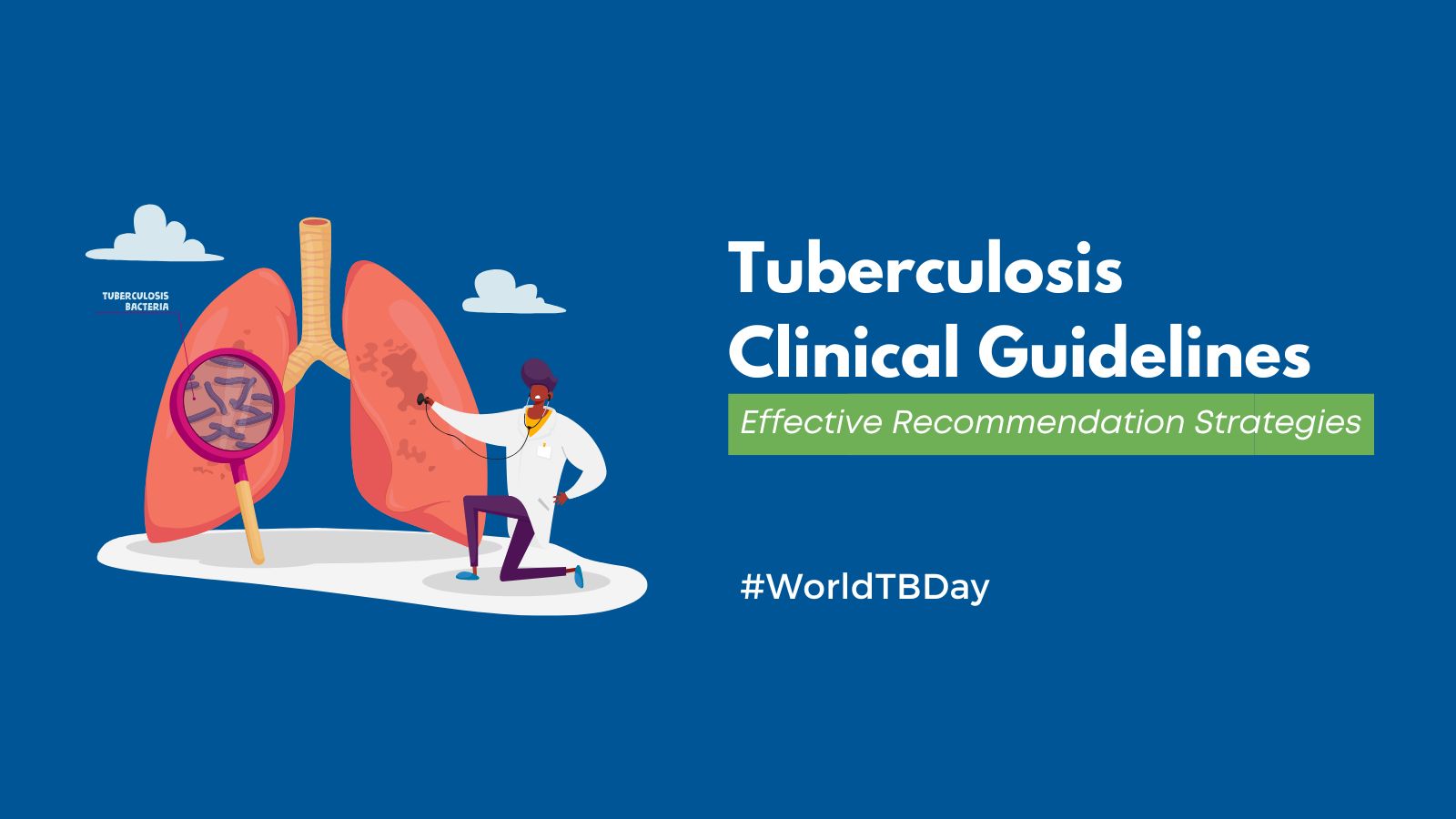
As World Tuberculosis Day or World TB Day approaches on March 24th, it’s important to remember that tuberculosis (TB) remains a significant global health issue. Prior to the COVID-19 pandemic, TB was the leading cause of death from a single infectious agent, ranking above HIV/AIDS. The United States has one of the lowest TB incidence rates in the world, however, there is not a single country in the world that has successfully eliminated the disease entirely.
Despite being a preventable and curable disease, TB still claims the lives of millions of people worldwide each year. In light of this, healthcare providers must stay up to date on the latest clinical practice guidelines for TB treatment and management to provide the best care possible for their patients.
In this article, we’ll delve into the clinical practice guidelines surrounding TB and review the recommendations from various medical societies to help educate clinicians on the most effective recommendation strategies for managing this disease.
Tuberculosis Screening & Assessment Guidelines
- Cough Due to TB and Other Chronic Infections
- Society:American College of Chest Physicians(CHEST)
- Published:February 2018
- Managing Chronic Cough As A Symptom In Children And Management Algorithms
- Society:American College of Chest Physicians(CHEST)
- Published:March 2020
- Digestive Tract Tuberculosis
- Society:World Gastroenterology Organization (WGO)
- Published:March2021
Tuberculosis Diagnosing & Treating Guidelines
- Diagnosis of Tuberculosis in Adults and Children
- Society:American Thoracic Society (ATS), Centers for Disease Control & Prevention (CDC), & Infectious Diseases Society of America(IDSA)
- Published:December 2016
- Treatment of Drug-Susceptible Tuberculosis
- Society:American Thoracic Society (ATS), Centers for Disease Control & Prevention (CDC), & Infectious Diseases Society of America(IDSA)
- Published:August2016
- Treatment of Latent Tuberculosis Infection
- Society:Centers for Disease Control & Prevention (CDC)
- Published:February 2020
- Treatment of Drug-Resistant Tuberculosis
- Society:American Thoracic Society (ATS), Centers for Disease Control & Prevention (CDC), European Respiratory Society (ERS) & Infectious Diseases Society of America(IDSA)
- Published:November2019
TuberculosisPharmacotherapy-Related Considerations
- Drug, Herbal and Dietary Supplement Induced Liver Injury
- Society:American Association for the Study of Liver Diseases (AASLD)
- Published:July 2022
- Psoriatic Arthritis Assessment and Treatment
- Society:Group for Research and Assessment of Psoriasis and Psoriatic Arthritis (GRAPPA)
- Published:June 2022
Tuberculosis Guidance for Specialized Patient Populations &/or Comorbidities
- Evaluation and Management of Candidates for Kidney Transplantation
- Society:Kidney Disease Improving Global Outcomes(KDIGO) & National Kidney Foundation (NKF)
- Published:April 2020
- Mycobacterium Tuberculosis Infections In Solid Organ Transplantation
- Society:American Society of Transplantation (AST)
- Published:March 2019
- Primary Care Guidance for Persons With Human Immunodeficiency Virus
- Society:HIV Medicine Association (HIVMA) & Infectious Diseases Society of America (IDSA)
- Published:November2020
- Use of Antiretroviral Agents in Adults and Adolescents Living with HIV
- Society:United States Department of Health and Human Services(DHHS)
- Published:September 2022
Tuberculosis Prevention Guidelines
- Environmental Infection Control in Healthcare-Facilities
- Society: Centers for Disease Control and Prevention (CDC)
- Published:July 2019
- Tuberculosis Screening, Testing, and Treatment of U.S. Health Care Personnel
- Society:College of American Pathologists (CAP)
- Published:May 2019
Successfully treating TB requires multiple medications to be taken by the patient over the course of several months. Remaining vigilant to assessing for signs and symptoms of tuberculosis infections, screening promptly, initiating therapy, and involving the patient in their healthcare decisions in a meaningful way is one way you can do your part as a clinician to continue eradicating TB in the United States.
Copyright © 2023 Guideline Central, All rights reserved.